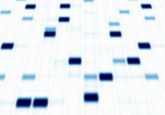Urinary nerve growth factor demonstrates potential diagnostic value

The group conducted a comprehensive meta-analysis of nine studies involving 259 patients with IC/PBS, 67 patients with OAB and 208 healthy controls. All patients met clinical criteria for IC/PBS, namely, suprapubic pain with a full bladder that was relieved after voiding and associated with severe frequency and nocturia.
The analysis revealed that patients with IC/PBS demonstrated higher urinary NGF and NGF/Cr levels compared with those of healthy people. In addition, the team noted a significant difference between patients with IC/PBS and patients with OAB symptoms with respect to the urinary NGF and NGF/Cr levels. When the patients were successfully treated, significantly lower urinary NGF levels were observed.
In light of these results, the team concluded that NGF may be a promising biomarker in the diagnosis of IC/PBS and OAB, and may assist in guiding the treatment of these conditions.
The research group, which was led by Ping Wang, a scientist from The Fourth Affiliated Hospital of China Medical University, has commented that the current evidence is limited, and a large, multicentre, randomized controlled trial with long-term follow-up is required in order to support these findings.
Source: Qu H-C, Zhang W, Yan S, Liu Y-L, Wang P. Urinary nerve growth factor could be a biomarker for interstitial cystitis/painful bladder syndrome: a meta-analysis. PLoS One doi: 10.1371/journal.pone.0106321 (2014) (Epub ahead of print).




